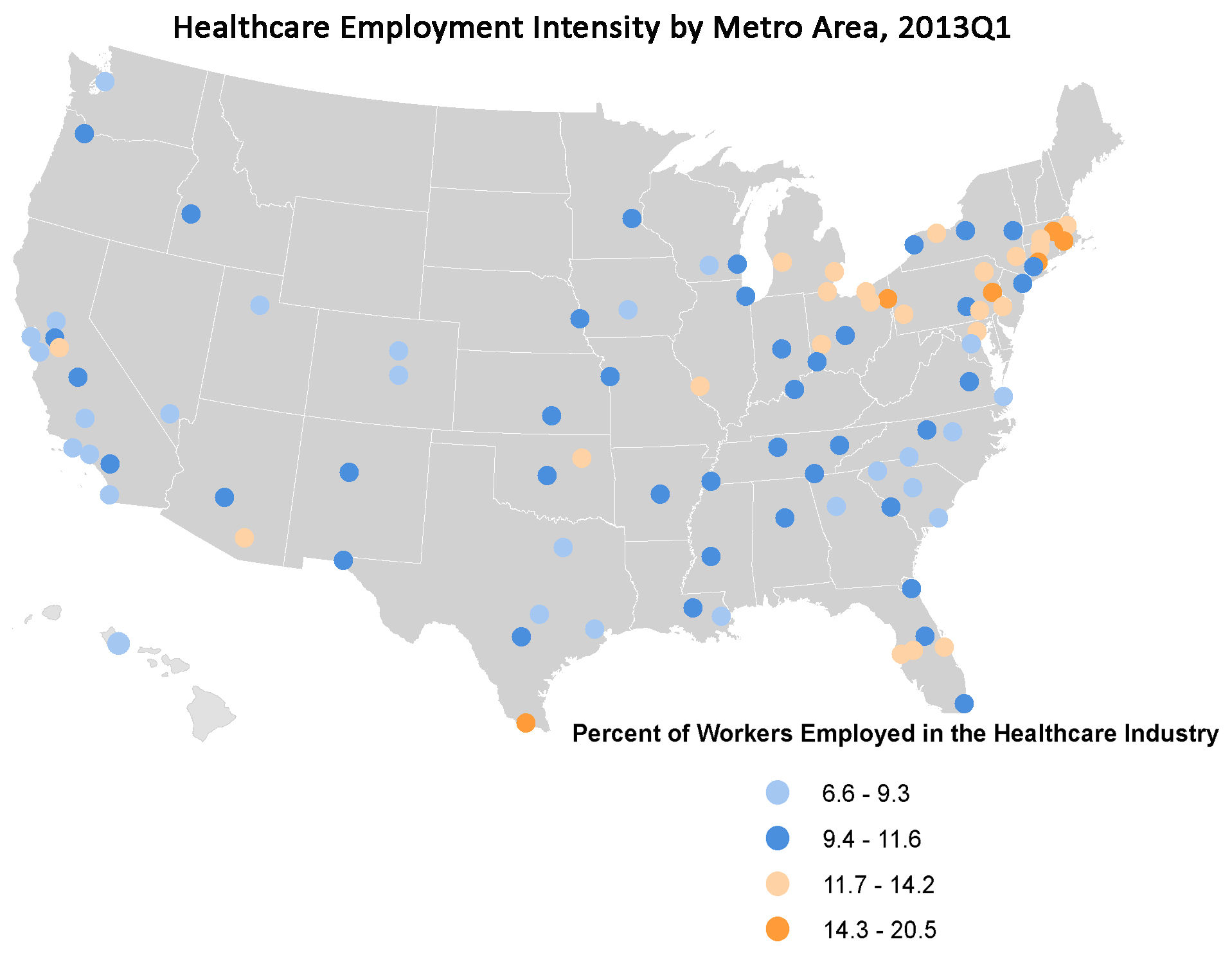Our Healthcare Metro Monitor Supplement tracks the role of healthcare in economic recession and recovery in the nation’s 100 largest metropolitan areas.
The implementation of the Affordable Care Act and pressures to contain costs, expand access to care and improve health outcomes have focused attention on the healthcare industry. Healthcare is a large, diverse, and growing component of the economy. It employs about 14.5 million people and accounts for 10.3 percent of jobs nationally in occupations that span the education, skills, and earnings continuum. Healthcare jobs are located in nearly every community across the country and in a variety of settings, including hospitals, ambulatory care offices, and skilled nursing facilities.
• Over the past decade, the healthcare industry has added 2.6 million jobs nationwide. The industry’s 22.7 percent employment growth rate over that period significantly outstripped the 2.1 percent employment growth rate in all other industries.

• Across the 100 largest metropolitan areas, the healthcare industry accounts for more than one in every 10 jobs. That share varies from just 7 percent in the Las Vegas metro area to 20 percent in the McAllen, TX metro area. Most healthcare-intensive metro areas are found in the Northeast and industrial Midwest, and in areas of Florida with large senior populations.

• In every one of the 100 largest metro areas, healthcare today represents a higher share of jobs than before the recession struck. Overall, healthcare has accounted for 13 percent of total job growth in the 100 metro areas over the course of the employment recovery. In 11 metro areas that span every major U.S. region, healthcare has accounted for more than 25 percent of that job growth.
• The occupational distribution of healthcare workers does not dramatically differ across metro areas, although healthcare support workers have the greatest variation between places. Healthcare practitioners (such as doctors, nurses, and dentists) on average account for 3.5 percent of all workers across the 100 largest metro areas, ranging from a low of 2.4 percent of workers up to 5.1 percent in individual metro areas. Healthcare technologists (such as lab technicians, sonographers, Magnetic Resonance Imaging technologists, paramedics, and medical records technicians) represent on average 2 percent of all workers across the 100 largest metro areas, ranging from 1.2 percent to 3.2 percent. Healthcare support workers (such as nursing assistants and home health aides) account for 2.9 percent of all workers across the 100 largest metro areas and have the largest range among healthcare occupations, from a low of 1.9 percent to a high of 5.4 percent.
• Wages for healthcare workers vary among occupation types and across metro areas. Practitioners have the highest earnings among healthcare workers and earn nearly double the average worker across all metropolitan areas. Healthcare technologists show considerable variation in their earning power across metro areas, earning more than the average worker in 35 of the 100 largest metro areas. Healthcare support workers, on the other hand, earn 37 percent less on average than all workers in large metropolitan areas. On average, healthcare wages track general wage levels in a metro area.
The Brookings Institution is committed to quality, independence, and impact.
We are supported by a diverse array of funders. In line with our values and policies, each Brookings publication represents the sole views of its author(s).




